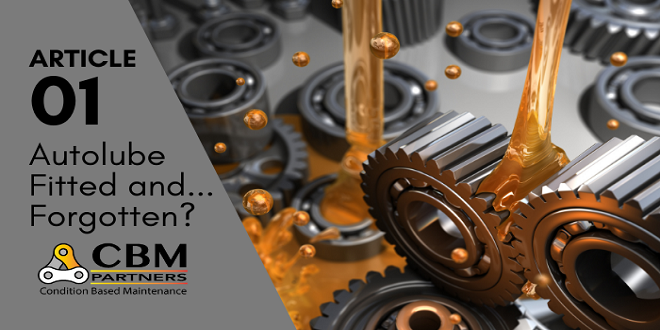How to Measure Maintenance Efficiency Using Lubrication Management

It is vital to maintain equipment in order for a business to run smoothly. How can you ensure that your maintenance efforts are efficient? Lubrication Management is a way to determine the effectiveness of your maintenance efforts. This blog post will explain how lubrication management can be used to measure maintenance effectiveness.
KPIs for Lubrication Management are Important
Many plants still struggle with lubrication today. Numerous studies show that equipment failure can be linked to inadequate lubrication more than 70% of the times. The use of key performance indicators for lubrication management (KPIs), can help you identify the causes of equipment failure. KPIs can also provide valuable insight into your profitability and productivity as well as safety and overall maintenance effectiveness.
How to choose which Lubrication Program KPIs you want to track
It can be difficult to decide your KPIs when there are so many elements to a Lubrication Program. These are some simple steps that will help you get started.
Check out the Mission of Your Organization – Does your lubrication program focus on reliability? Do you have a primary mission to lower costs? Is it to reduce costs? This will help you make the right KPI decisions.
Consider your three main goals and the KPIs that are related to them.
Identify Your Lubrication Programme Stakeholders – These are people or groups that would be most interested to learn about the results of your KPIs. They may also have valuable input.
Define Your Goals – The KPIs that you select should directly relate to your goals.
Best Practices in Machinery Lubrication KPIs
One KPI cannot measure a lubrication program. To ensure accurate and meaningful data, multiple KPIs are required. You can select up to six KPIs for each of your primary objectives. These will serve as the driving force behind that objective. Too many KPIs can lead to you losing sight of your goals and getting lost in data collection.
These are the best practices to use for KPIs you select:
Be sure that your KPIs are specific and appropriate to the results you will be measuring.
Your KPIs should use data that you already track and have.
You can set a KPI (target, specific, quantifiable, and measurable goal), which could be a percentage or dollar amount.
Set up a reporting system to allow you to compare past performance and benchmarks.
Recommended Lubrication Management KPIs
High-level KPIs
A few KPIs that provide a high-level overview of the operation will allow you to see how it is managed. These KPIs provide insight into the overall health of the machinery. The percentage of assets that are free from known problems is an example of overall asset health. Another useful KPI in lubrication management is lubrication related failures. This KPI measures the number of equipment-related failures and their costs.
KPIs for Work Management
If you need to monitor your work and plan, schedule, and execute lubrication programs, then KPIs for Work Management are essential. Many of these KPIs can be calculated using data from your Computerized maintenance management system (CMMS), or Lubrication Manager Software. Some KPIs, however, will require technicians to keep track of specific lubrication points. These KPIs are lubrication.
Lubrication Task Complete – This is a percentage measurement of effectiveness at task level. Divide the total number completed lubrication task by the scheduled lubrication task, and multiply that number by 100. If you get a low result, it is likely that your lubrication routes are inefficient, resource allocation problems, equipment access difficulties, or workload balancing issues.
Lubrication Tasks Past Due This KPI measures the number of lubrication task that are past due and those that are scheduled. If you see a high number, it is time to examine your lubrication system for the above issues.
Analysis Of All KPIs – Find out how often and in what amount your team meets lubrication goals using both the above KPIs.
Lubricant Storage KPIs
Your overall success in lubrication depends on how you store and manage lubricants. Stockouts and stock levels are critical lubrication inventory management KPIs. Stockouts are when the lubricant you need is not in stock. Stockouts can put your equipment at risk. It is especially important to monitor them.
KPIs for Health, Safety, and Environmental (HSE).
Without KPIs for HSE, no maintenance program would be complete. Safety and health at work are also top priorities for lubrication. Knowing the KPIs in this area will allow you and your team to spot potential hazards before they become an issue. These KPIs will help you spot leaks, poor oil condition, and other issues. The waste oil collection rate is one such KPI. This can be used to measure the amount of lubricant consumed over time in a variety of facilities, or a specific section or department of the plant.
KPIs for Lubricant Analysis
These KPIs are a great way to improve the effectiveness of your lubrication programs. They monitor the relevant conditions indicators and ensure that the lubricant performs as expected. To get meaningful feedback, you need to set appropriate thresholds and alarms to collect lubricant analysis data. Remember your reliability and mission when setting thresholds. People often set targets based upon where they are now and what they believe is possible. Even if your target KPI is far away, it’s better to set thresholds that align with your long-term goals. It will then be much easier to use lubricant analyses KPIs to determine levels of contamination and lubricant quality at your facility.
For effective preventive maintenance, it is vital to manage your lubrication.
Your maintenance effectiveness can be improved by monitoring and analysing your reliability and lubrication metrics. You can’t manage what isn’t measured. You can gain valuable insight by adding lubrication management KPIs in your maintenance plan. This will give you valuable insight into the importance of lubrication to your plant’s reliability and safety. You will have a better lubrication experience if you have clearly defined objectives, procedures, metrics, and measures to support them.



